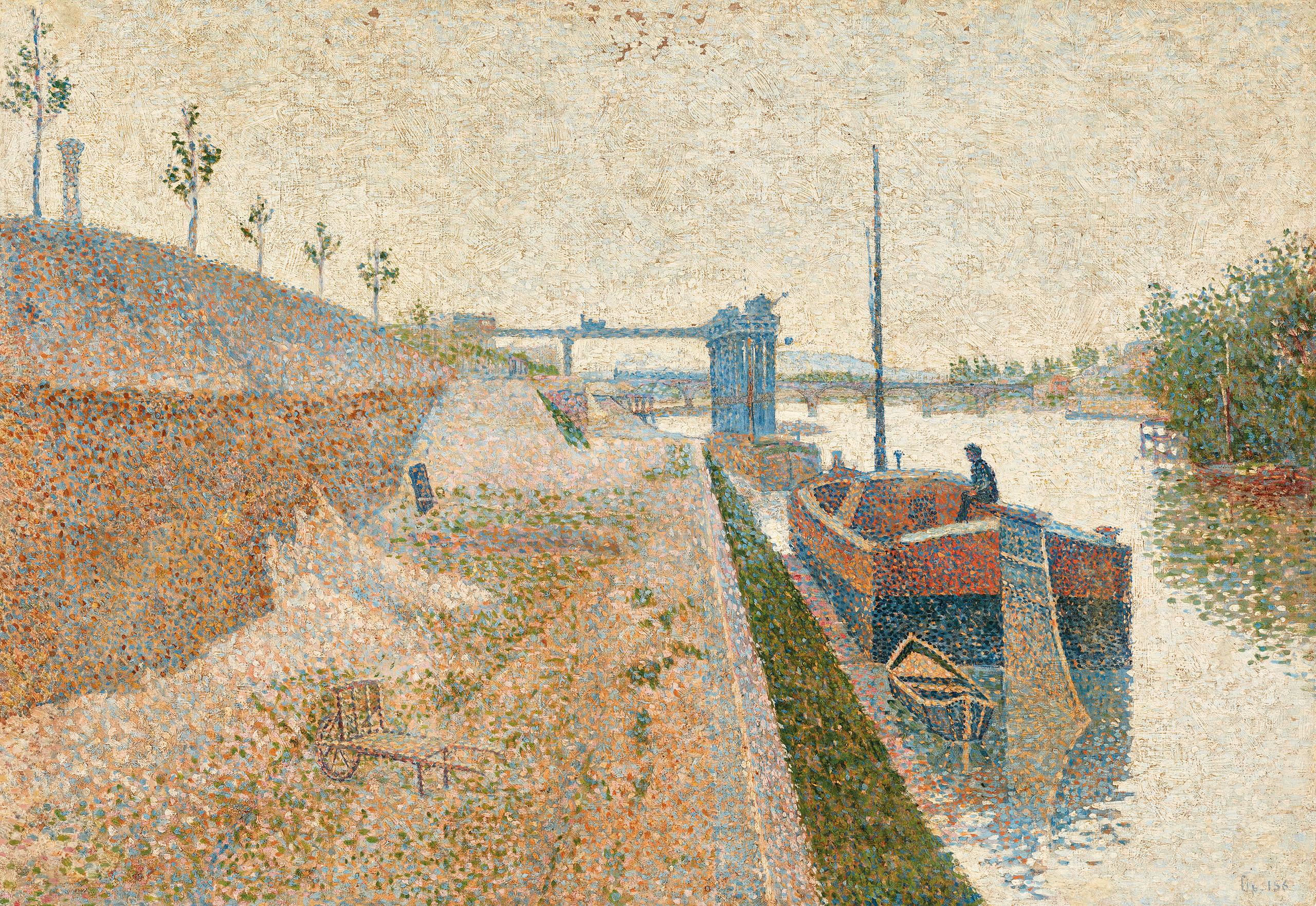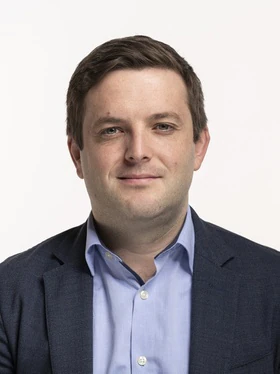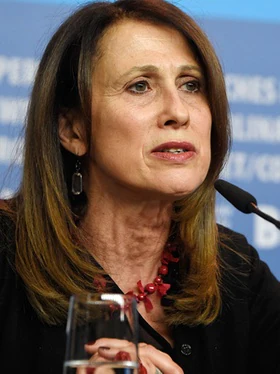News:
Switzerland mulls a commission to judge Nazi-looted art claims
By Catherine Hickley
More than three-quarters of a century after the end of the Second World War, the Swiss parliament is set to debate a new framework for handling claims for art looted from Jews by the Nazis or sold under duress.

Paul Signac's painting Quai de Clichy was restituted to its rightful owners in 2019 by the Bern museum of fine arts and the Federal Republic of Germany.
A parliamentary motion, to be submitted by the Social Democratic Party lawmaker Jon Pult, calls for “an independent commission which issues recommendations in cases of cultural property lost as a result of Nazi persecution.” It comes in response to a barrage of criticism over the display of Emil Georg Bührle’s controversial collection in a new extension to Zurich’s Kunsthaus art museum, opened in October.
Bührle made his fortune by selling arms to Germany during World War II, bought Nazi-looted art, and profited from slave labour. The Bührle Foundation, which owns the approximately 200 works on show in the museum, says none of these were looted from Jews. But claimants say that without independent provenance research and a neutral panel to evaluate claims for Nazi-looted art, they have no access to a fair hearing.

Jon Pult
“The story of the Emil Bührle collection has shown that the subject is bigger and more explosive that people realised,” Pult says. “We need better instruments.” In his reasoning for the motion, Pult wrote that “Switzerland would be making its contribution to addressing a dark chapter of history and living up to its responsibility in handling cultural property lost as a result of Nazi persecution” by setting up an independent panel.
The motion, which he plans to submit to parliament this week, is backed by the Swiss Federation of Jewish Communities, an association of Jewish groups. Switzerland, which served as a hub for Nazi-looted art before and during World War II, is among 44 governments and organizations that endorsed the non-binding Washington Principles in 1998. Under these principles, governments agreed to encourage museums to conduct provenance research, identify art seized by the Nazis, and seek “just and fair solutions” with the original Jewish collectors and their heirs for works lost due to persecution. They also agreed to establish “alternative dispute resolution mechanisms for resolving ownership issues.”
While France, Germany, Austria, the Netherlands and the U.K. all set up panels to assess claims for Nazi-looted art in museum collections, 23 years after the Washington Principles were agreed, Switzerland has so far not done so. Last month, former members of the Bergier commission – an international panel established in 1996 to investigate Switzerland’s financial dealings during World War II – described the Bührle situation as “an affront” to victims and called for such a panel to be created. Pult says he has support from four parties in parliament for his motion and hopes the government will adopt it. “It is in Switzerland’s interest from a foreign policy point of view in terms of credibility,” he says, adding the initiative is “better late than never.”
Anne Webber, the co-chair of the London-based Commission for Looted Art in Europe, says Switzerland’s approach to Nazi-looted art since endorsing the Washington Principles has been “erratic and inconsistent.” “It has made regular commitments but has not fulfilled them,” Webber says. “The federal government promises fair and just solutions, but there is no framework to ensure those are provided.” The government’s position so far has been that there are not enough cases to warrant a panel.

Anne Webber
But Benno Widmer, the head of the museums and collections department of the Federal Office for Culture, said last month that “if the need intensifies due to an increasing number of contentious cases, then the demand for an external commission could be re-examined.”
Advocates for a panel point out that there have already been several claims for Nazi-looted art in Switzerland. The Bern fine arts museum (Kunstmuseum), for instance, inherited the controversial hoard of the reclusive Cornelius Gurlitt. His father, Hildebrand Gurlitt, had served as a dealer and art buyer for Adolf Hitler in occupied Europe. Fourteen works from the bequest have so far been restituted to the heirs of Jewish collectors whose art was looted or sold under duress.
"This commission should have been set up 15 years ago”, says Andrea Raschèr, an independent consultant who ran the department of legal and international affairs at the Federal Office of Culture from 1995 to 2006. He thinks a new panel should be “fully independent and its members should be an optimal mix of lawyers, ethicists and historians. It is worth looking closely at both the German and British models.”
And as Pult’s motion points out, there may be more work for the panel in years to come. Swiss museums are also examining their colonial era collections. Museums in other countries, including Germany, the U.K. and the U.S., have pledged to return objects looted in 1897 in a British raid on the royal kingdom of Benin, in modern-day Nigeria. Eight Swiss museums have pooled their resources to examine the provenance of their own Benin collections. The research project is expected to conclude in summer 2022.
“We should examine whether the commission could also issue recommendations on cultural goods from other contexts, namely colonial,” Pult’s motion says.
One of the key criticisms of Switzerland’s record is the distinction made between Nazi-looted art and what museums call “Fluchtgut,” or “flight assets” – works that Jewish collectors sold under duress, often to finance their escape from Nazi Germany. German museums use the collective term of “losses due to Nazi persecution” and treat all such claims as potential restitution cases to be weighed individually.
In Switzerland, however, museums have traditionally viewed purchases of “flight assets” as legitimate. Art sold by Jews in financial straits because of the Nazis’ confiscation of their assets to fund their escape from Germany is not necessarily viewed as eligible for restitution. Pult’s motion proposes that a new panel should not make this distinction.
There will, of course, be opposition to Pult’s plans. Christoph Blocher, an art collector and former leader of the right-wing Swiss People’s Party, wrote in an essay for the weekly magazine Weltwoche that the debate over the Bührle collection was the symptom of a “morally corrupted society.” Calls for a panel, Blocher wrote, were about historians and lawyers hoping for lucrative commissions.
“I simply don’t expect a fast development, because resistance from the museums and private collectors will be considerable,” says Olaf Ossmann, a lawyer specialised in Nazi-looted art cases who is based in Switzerland. “The museums will find every means to oppose this.”
Still, Webber of the Commission for Looted Art in Europe is not giving up hope just yet. “It’s to be hoped that that the Gurlitt bequest to Bern and the Bührle situation in Zurich will have lit a touch-paper so that the Swiss government embraces the issues comprehensively and addresses them with real determination and commitment,” she says. “The problem is not going to go away until it does.”
https://www.swissinfo.ch/eng/culture/switzerland-mulls-a-commission-to-judge-nazi-looted-art-claims-47171508?utm_campaign=own-posts&utm_medium=socialflow&utm_content=o&utm_source=twitter

